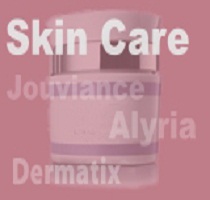WRAPPING HYDROXYAPATITE IMPLANTS
(InSIGHT Newsletter Special Edition/ Update)
In 1985, hydroxyapatite as an orbital implant (Bio-Eye® ) was introduced for use in the anophthalmic socket and a new era in anophthalmic reconstruction began. In a recent survey of 5,439 intraorbital implants, hydroxyapatite (Bio-Eye® ) was the implant most commonly used by ophthalmic plastic surgeons in North America [1]. It has several advantages over previously used implants including having a porous structure made of material similar in nature to the mineral component of human bone. As a result, it is recognized by the body as similar. Its extensive pore system permits fibrovascular ingrowth, helping the implant to resist migration, a problem not uncommonly seen with its predecessor, the non-porous polymethylmethacrylate sphere. The hydroxyapatite implant also allows secure attachment of the extraocular muscles which in turn lead to improved orbital implant motility. In addition, the implant can be directly coupled to the prosthesis through a peg system, allowing a wide range of prosthetic movement as well as fine darting eye movements, commonly seen during conversational speech [2,3,4]. The 3rd generation Synthetic Hydroxyapatite Implant (FCI3)[5] is a viable alternative to the Bio-Eye® and currently being distributed throughout Canada, Europe and several parts of the world. It is chemically identical to the Bio-Eye® , shows equally good vascularization (in a rabbit model), is easy to work with and well tolerated by human patients. The major advantages of this implant include; 1) less costly, 2) easier to drill (as a motorized drill is not required) and 3) environmentally conservative (as marine ecosystems are not affected by its production)[6,7].
Wrapping
To facilitate entry of a hydroxyapatite implant into the orbit, a wrap of some variety is recommended. Sclera is most commonly used but may not be the most ideal or practical. Sclera has to be ordered through an eye bank and is not always readily available. At one time, sclera was free of charge but now may cost up to 300 US dollars. In addition, the use of donor material in this era of potentially fatal infectious disease (such as HIV) must always be considered and discussed in detail with any potential recipient. Although stringent criteria are used before accepting donor tissue (eye bank eyes) and although there have not been any case reports of disease transmitted via sclera, many patients are uncomfortable accepting donor tissue. Furthermore, human immunodeficiency virus has recently been identified in preserved human sclera, by the polymerase chain reaction [8]. Alternative wraps without risk of disease transmission include the patient’s own temporalis fascia or fascia lata (autologous tissue). Recently, other implant wraps have been introduced including processed human pericardium, processed human fascia lata, processed human sclera and bovine pericardium. The author herein prefers Vicryl Mesh® (Ethicon) [9,10,11] as a wrap since it eliminates the need for donor tissue (and the possible risk of disease transmission), eliminates a second surgical site, is readily available, simple to use, and inexpensive (22 US dollars per wrap). The Vicryl Mesh® is absorbable and allows 360 degree entry of fibrovascular tissue as opposed to entry through scleral windows.
The Wrap Technique
The Vicryl Mesh® is available in most hospitals as a 6 inch by 6 inch sheet (product code: VKMM, 6″ x 6″ knitted, undyed, Vicryl Mesh) [11]. Recently the company has been providing the author with precut sheets of 2 1/2″ x 3″ that are a special order item at this time (product code: EC465) [11]. The hydroxyapatite implant (16,18 or 20 mm size) is placed on a 2 1/2 inch by 3 inch sheet of undyed, braided Vicryl Mesh® (a slightly larger piece is required for 22 mm spheres). The corners of the mesh are then held together. While one hand holds the corners of the mesh, the hydroxyapatite sphere is twisted so that the mesh twists upon itself posterior to the implant. A 4-0 Vicryl suture is then tied around the mesh to hold it. The excess Vicryl is trimmed. Several drill holes are placed into the implant through the Vicryl Mesh®, with a 20 gauge needle as described by Ferrone & Dutton to improve vascularization [12]. No windows are cut in the mesh. The Vicryl encased implant is placed into a Carter-sphere-introducer-holder (Storz E5652) and inserted into the socket. This instrument facilitates entry of the hydroxyapatite implant into the socket. To ensure the implant is properly seated, the surgeon should apply posterior pressure on the implant with a Q-tip® and, using Adson toothed forceps, simultaneously carefully pull on conjunctiva and anterior tenons capsule for 360 degrees to be sure the tissue edges have not been rolled inward. When placed into the orbit properly, the Vicryl Mesh wrapped implant should sit in position with no tendency to extrude. The rectus muscles are then attached to the Vicryl Mesh wrapped hydroxyapatite implant followed by a meticulous closure of the tenons capsule and conjunctiva in separate layers.
References
1. Hornblass A, Biesman B, Eviator J. Current techniques of enucleation: a summary of 5,439 intraorbital implants and a review of the literature. Ophthal Plast Reconstr Surg 1995:11(2):77-88).
2. Perry AC. Advances in enucleation. Ophthal Plast Reconstr Surg 1991:4(1):173-182.
3. Byrd WA. Corraline Hydroxyapatite Orbital Implant. Ophthalmic Practice 1991:9:6:262-266.
4. Dutton J. Corralline hydroxyapatite as an ocular implant. Ophthalmology 1991:98:370-377.
5. FCI, 20 Boulevard Gallieni – BP111, 92134 Issy-Les-Moulineaux, Cedex, France. Tel: (0) 1 40 93 4687.
6. Sieff SR, Chang Jr. JS, Hunt MH, Khayam-Boshi H. Polymerase chain reaction identification of human deficiency virus-1 in preserved human sclera. Am J Ophthalmol 1994:118:528-36.
7. Jordan DR, Allen LH, Ells A, Gilberg S, Brownstein S, Munro SM, Grahovac S, Raymond F. The use of Vicryl Mesh (polygalactin 910) for implantation of hydroxyapatite orbital implants. Ophthal Plast Reconst Surg 1995:11:295-99.
8. Sieff SR, Chang Jr. JS, Hunt MH, Khayam-Boshi H. Polymerase chain reaction identification of human deficiency virus- 1 in preserved human sclera. AmJ Ophthalomol 1994:118:528-36.
9. Jordan DR, Allen LH, Ells A, Gilberg S, Brownstein S, Munro SM, Grahovac S, Raymond F. The use of Vicryl Mesh (polygalactin 910) for implantation of hydroxyapatite orbital implants. Ophthal Plast Reconst Surg 1995:11:295-99.
10. Jordan DR, Ells A, Brownstein S, Munro SM, Grahovac S, Raymond F, Gilberg S, Allen LH. Vicryl Mesh wrap for the implantation of hydroxyapatite orbital implants: an animal model. Can J Ophthalmol 1995:30:5:241-46.
11. In United States – Ethicon Inc. In Canada – Ethicon, A Division of Johnson’s & Johnson’s. 1-800-268-5577.
12. Ferrone PJ, Dutton JJ. Rate of vascularization of corraline hydroxyapatite ocular implants. Ophthalmology 1992:99:376-7
See also : The Synthetic Hydroxyapatite Implant
See also : Drilling the FCI3 Synthetic Hydroxyapatite Implants
See also : Tips for Pegging Hydroxyapatite Implants (Bio-Eye® and FCI3 HA)
If you have any questions regarding the topics of this newsletter, or requests for future topics of InSight, please contact Dr. David R. Jordan office by telephone at (613) 563-3800.







